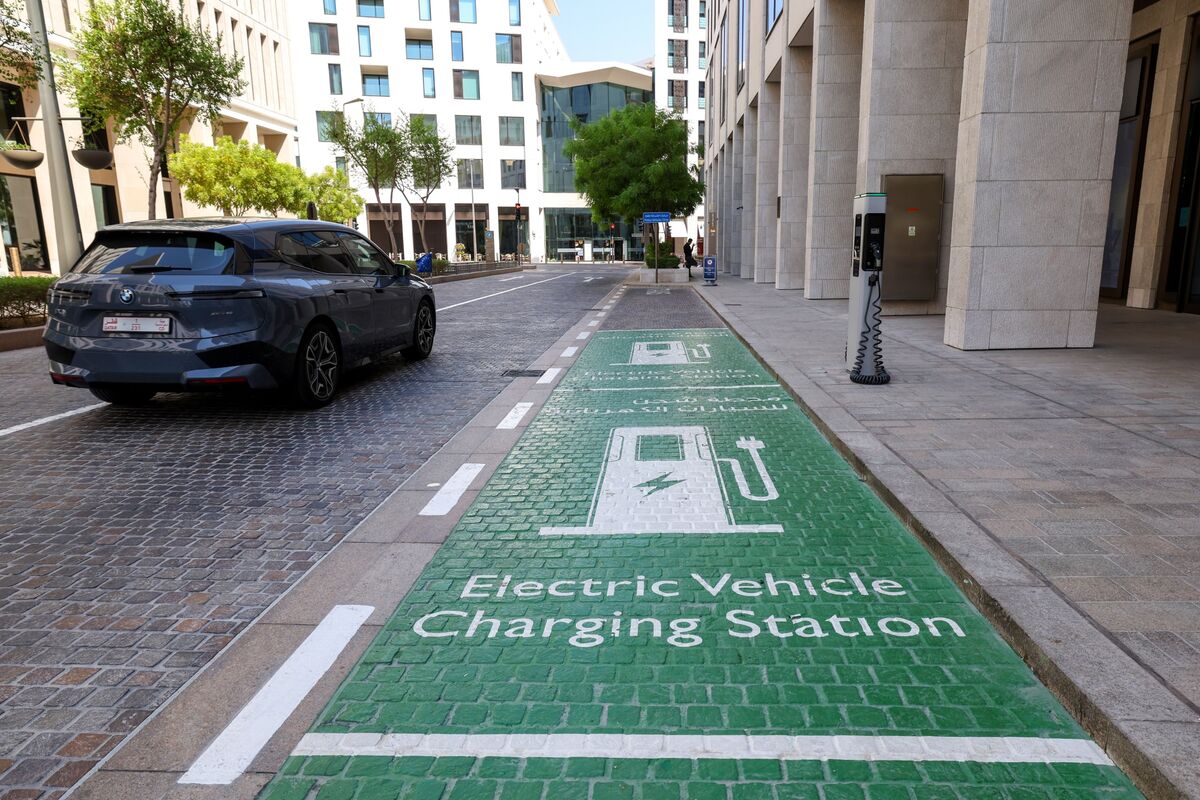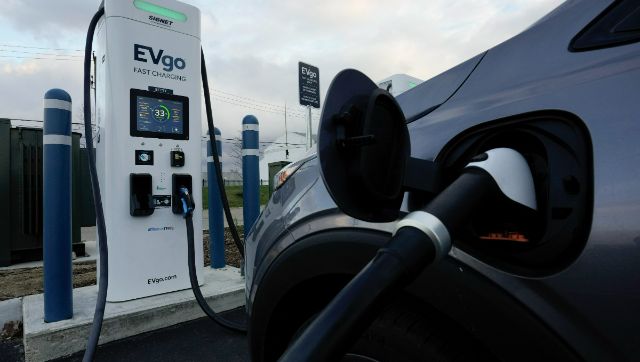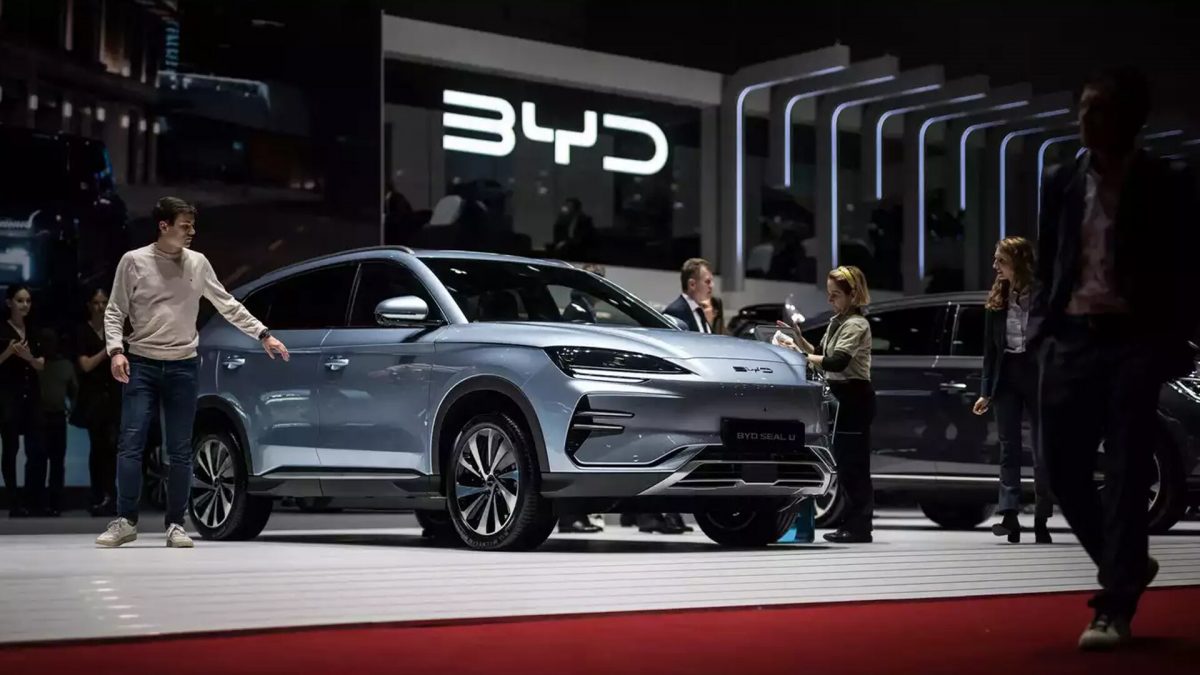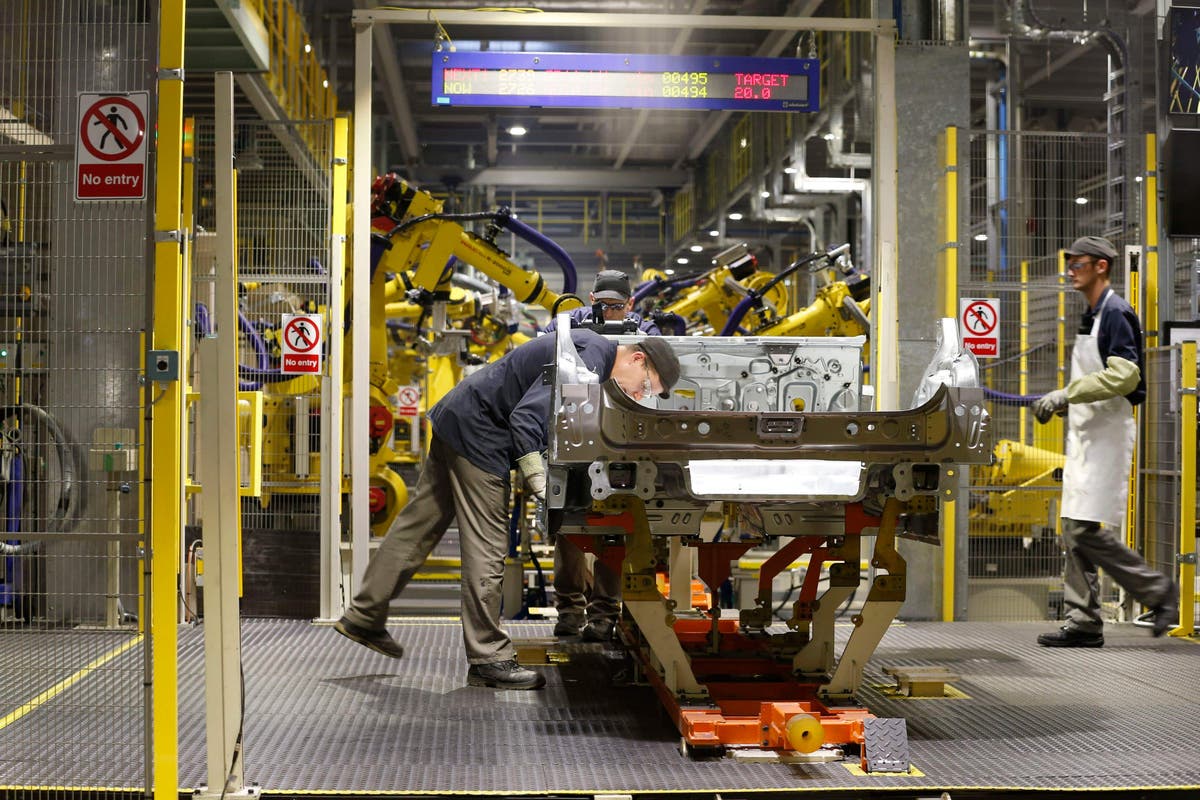
Stiff EPA emission limits to boost US electric vehicle sales
Associated PressWASHINGTON — The Biden administration is proposing stiff new automobile pollution limits that would require up to two-thirds of new vehicles sold in the U.S. to be electric by 2032, a nearly tenfold increase over current electric vehicle sales. A look at what the EPA is proposing, how the plan serves President Joe Biden’s ambitious goal to cut America’s planet-warming greenhouse gas emissions in half by 2030, and whether the auto industry can meet the new EV targets: WHAT THE EPA IS PROPOSING: The proposed tailpipe pollution limits don’t require a specific number of electric vehicles to be sold every year but instead mandate limits on greenhouse gas emissions. WHAT THE AUTO INDUSTRY IS SAYING: John Bozzella, CEO of the Alliance for Automotive Innovation, a trade group representing Ford, General Motors and other automakers, called the EPA proposal “aggressive by any measure” and wrote in a statement that it exceeds the Biden administration’s 50% electric vehicle sales target for 2030 announced less than two years ago. “How fast will depend almost exclusively on having the right policies and market conditions in place.” European car maker Stellantis said officials were “surprised that none of the alternatives” proposed by EPA “align with the president’s previously announced target of 50% EVs by 2030.’' HOW THE CHANGES COULD BENEFIT THE ENVIRONMENT: The proposed standards for light-duty cars and trucks are projected to result in a 56% reduction in projected greenhouse gas emissions compared with existing standards for model year 2026, the EPA said. Margo Oge, former head of EPA’s Office of Transportation and Air Quality, called the tailpipe rules “the single most important regulatory initiative by the Biden administration to combat climate change and to really reduce the worst outcomes of climate change.” WHAT ELSE THE ADMNISTRATION IS DOING TO PROMOTE EVs: At present, many new EVs manufactured in North America are eligible for a $7,500 tax credit under the 2022 climate law, while used EVs can get up to $4,000.
History of this topic

Biden makes a last big push to keep Trump from killing the electric car
Politico
Why Newsom’s electric vehicle mandate is in trouble
LA TimesAuto industry’s shift toward EVs is expected to go on despite Trump threat to kill tax credits
Associated Press
New petrol car sales tumble while EVs rise as manufacturers push electric vehicles with targets looming
Daily MailHouse backs measure to overturn Biden auto emissions rule that Republicans say would force EV sales
Associated Press
5 takeaways from Biden's tariff hikes on Chinese electric vehicles
NPRUS loosens some electric vehicle battery rules, potentially making more EVs eligible for tax credits
Associated Press
EPA issues new clean air rules for heavy-duty trucks. California’s rules are tougher
LA Times
Biden Administration's New Auto Rules To Curb Carbon
Huff PostEPA issues new auto rules aimed at cutting carbon emissions, boosting electric vehicles and hybrids
Associated Press
Editorial: Hold the applause. Biden’s new EV rules don’t go fast enough for the climate crisis
LA Times
Biden administration revs up plans to transition from gas-powered vehicles to EVs
LA Times
‘This will be something that people see and feel’: What to expect from Biden’s clean car push
PoliticoAs electric vehicle sales slow, US relaxes plans for stricter auto emissions standards for a while
Associated Press
Electric Vehicle Sales Growth Is Slowing Globally. Here’s Why
BloombergAuto dealers up campaign urging Biden administration to halt EPA tailpipe emission limits regulation
Associated Press
Auto dealers up campaign urging Biden administration to halt EPA tailpipe emission limits regulation
The IndependentFor consumers shopping for an EV, new rules mean fewer models qualify for a tax credit
Associated Press
More electric vehicles lose tax credits due to battery sourcing rules in US
Live Mint
Electric car models eligible for $7,500 tax credit cut to 13
LA TimesMore US auto buyers are turning to hybrids as sales of electric vehicles slow
Associated Press
Why Biden’s EV tax credit could become hard to claim
Live MintNew US rules, aimed at curbing China, could make it harder for EV buyers to claim a full tax credit
Associated PressUS electric vehicle sales to hit record this year, but still lag behind China and Germany
Associated Press
Only a quarter of electric car sales this year have been to private buyers - despite Government's pledge for motorists to make the switch by 2030
Daily MailUS proposes 18% fuel economy increase for new vehicle fleet from 2027 through 2032
Associated Press
Electric cars could save more than 100,000 lives, study claims
The Independent
California hits 1.5 million in zero-emission vehicle sales
LA Times
Explainer | How U.S. President Joe Biden is pushing a switch to electric vehicles in the U.S.
The Hindu
10 electric and plug-in hybrid cars that qualify for $7,500 tax cut
Daily Mail
Editorial: Only a few EVs made the tax credit list. That’s bad news for the climate
LA Times
See the EVs eligible for tax credits - and why most aren’t
Associated Press
New US tax credit rules narrow the list of eligible EVs
Hindustan Times)
EPA proposes strict emission limits to boost US electric vehicle sales
Firstpost
EPA pollution limits aim to boost U.S. electric vehicle sales
LA Times
Biden administration announces sweeping car emissions proposal
Al Jazeera
4 in 10 say next vehicle may be electric: AP-NORC/EPIC poll
Associated Press
AP sources: EPA car rule to push huge increase in EV sales
Associated Press
California’s big plans to electrify big rigs: Zero-emissions mandates gain momentum
LA Times
Letters to the Editor: EV tax credits aren’t perfect, but Biden’s progress on them is worth praising
LA Times
Many electric vehicles to lose big tax credit with new rules
Associated Press
Treasury makes more electric SUVs eligible for tax credits
Associated Press
Manchin pushes to delay tax credits for electric vehicles
Associated Press
Manchin pushes to delay tax credits for electric vehicles
Associated Press
Manchin pushes to delay tax credits for electric vehicles
LA Times
The best way to get an electric car discount? Try leasing
LA Times
Electric car sales overtake diesels in 2022
Daily Mail
EXPLAINER: 2023 tax credits for EVs will boost their appeal
Associated Press
EXPLAINER: 2023 tax credits for EVs will boost their appeal
Associated PressDiscover Related















)







)



















